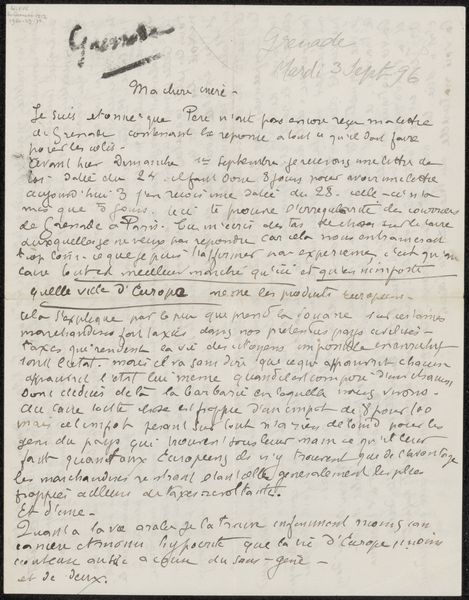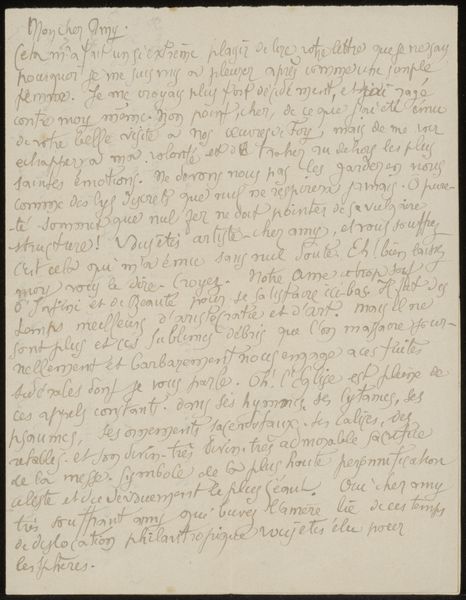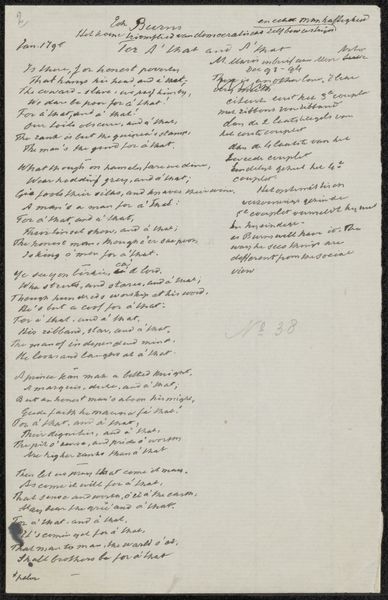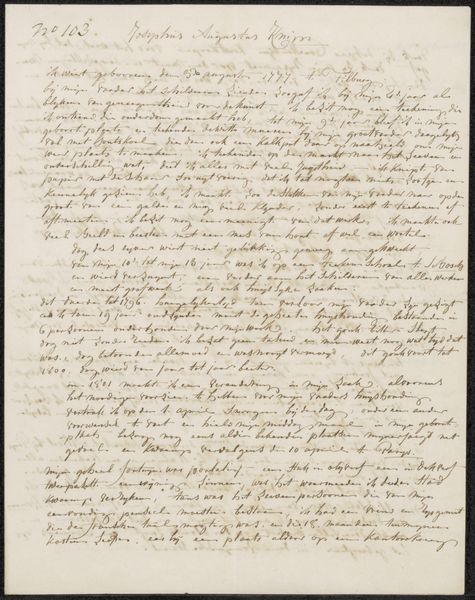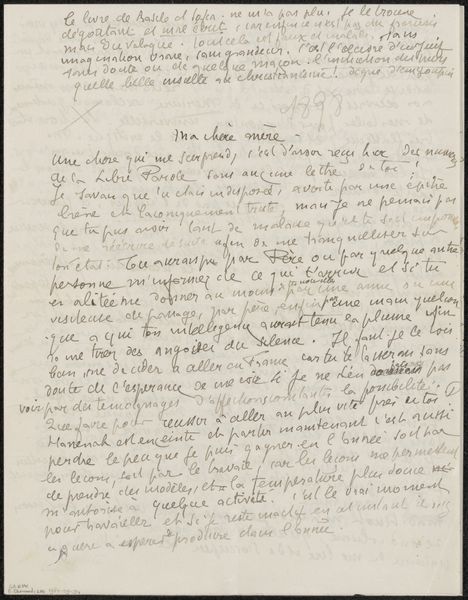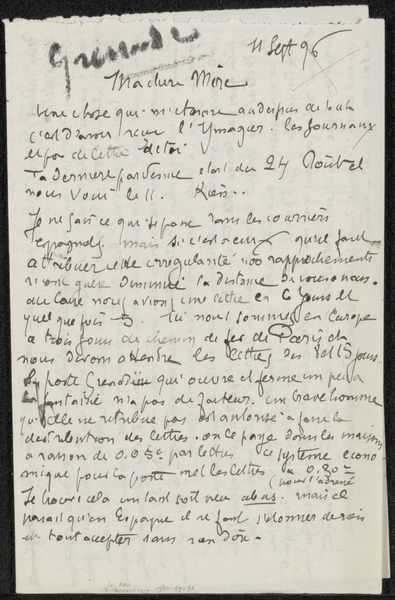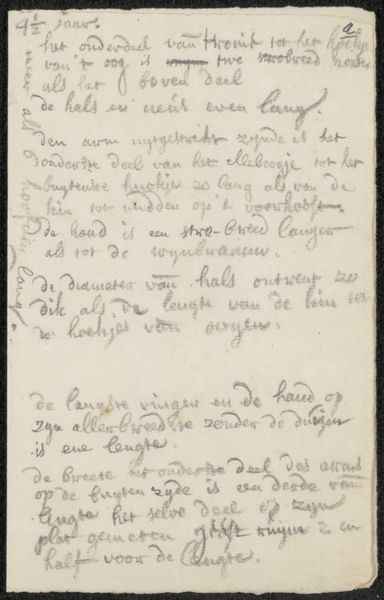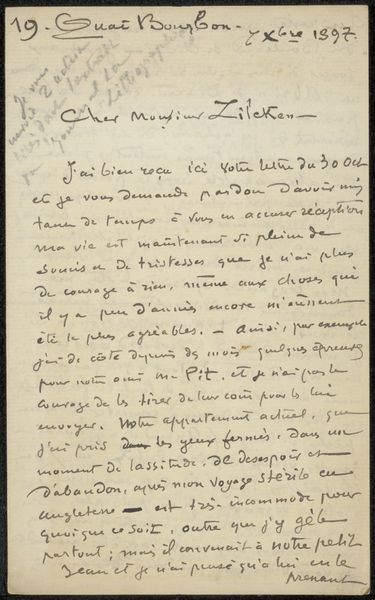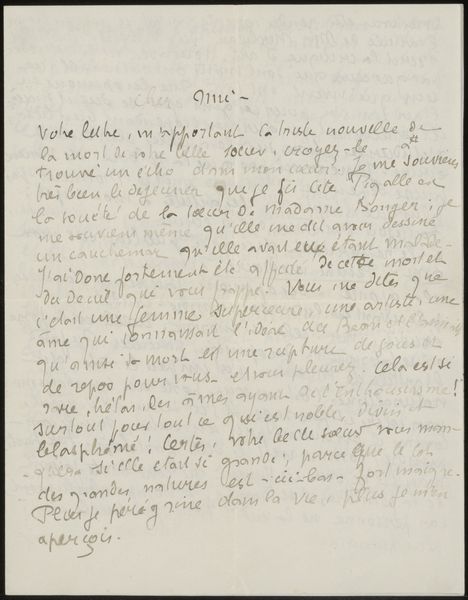
drawing, paper, ink
#
drawing
#
dutch-golden-age
#
paper
#
ink
#
fading type
#
history-painting
Copyright: Rijks Museum: Open Domain
Curator: This intriguing artwork is titled "Handschrift betreffende Romeyn de Hooghe en familie," created after 1661 by Johannes de Hooghe. It’s a drawing rendered in ink on paper, showcasing a fragment of history through Dutch Golden Age aesthetics. Editor: My first thought? It has the quiet gravitas of faded memories, doesn't it? All those delicate lines and archaic characters seem to hold secrets just out of reach, giving the work such a powerful melancholic mood. Curator: Indeed. De Hooghe's work functions almost like a family chronicle. It references Romeyn de Hooghe, who was a prominent etcher and printmaker of the Dutch Golden Age, and other family relations. Editor: Placing this document within its historical context allows us to understand its cultural work. Consider how these hand-written family records would assert lineage and social standing within the stratified society of the Dutch Republic. It makes you wonder whose story it’s prioritizing. Curator: That’s a very astute observation. Beyond the context, consider the calligraphic technique and its significance in that era. Handwriting was an art form. Each stroke reflects not just the word, but the writer's personality and education. The fading ink emphasizes the ephemerality of even the most carefully recorded history. Editor: Precisely, and it's not merely a question of decay; that deliberate scripting performed identity, didn’t it? What names are emphasized? Whose relationships are privileged? It seems as though history, even in such private records, is still a selective narrative. Curator: The composition itself guides the eye through generations. Look at how the handwriting flows. Some names are boldly rendered while others are just mere traces. The contrast in texture adds another layer to its complexity. Editor: For me, the piece underscores the paradox of historical documents. These seemingly objective records, crafted with deliberate artistic and social intention, were meant to preserve legacies, yet time has reduced them to poignant whispers that encourage our reflection upon the ever-shifting grounds of power. Curator: It’s a reminder of the layers inherent in even the most personal archival records. Editor: A deeply compelling reminder, wouldn’t you agree?
Comments
No comments
Be the first to comment and join the conversation on the ultimate creative platform.

